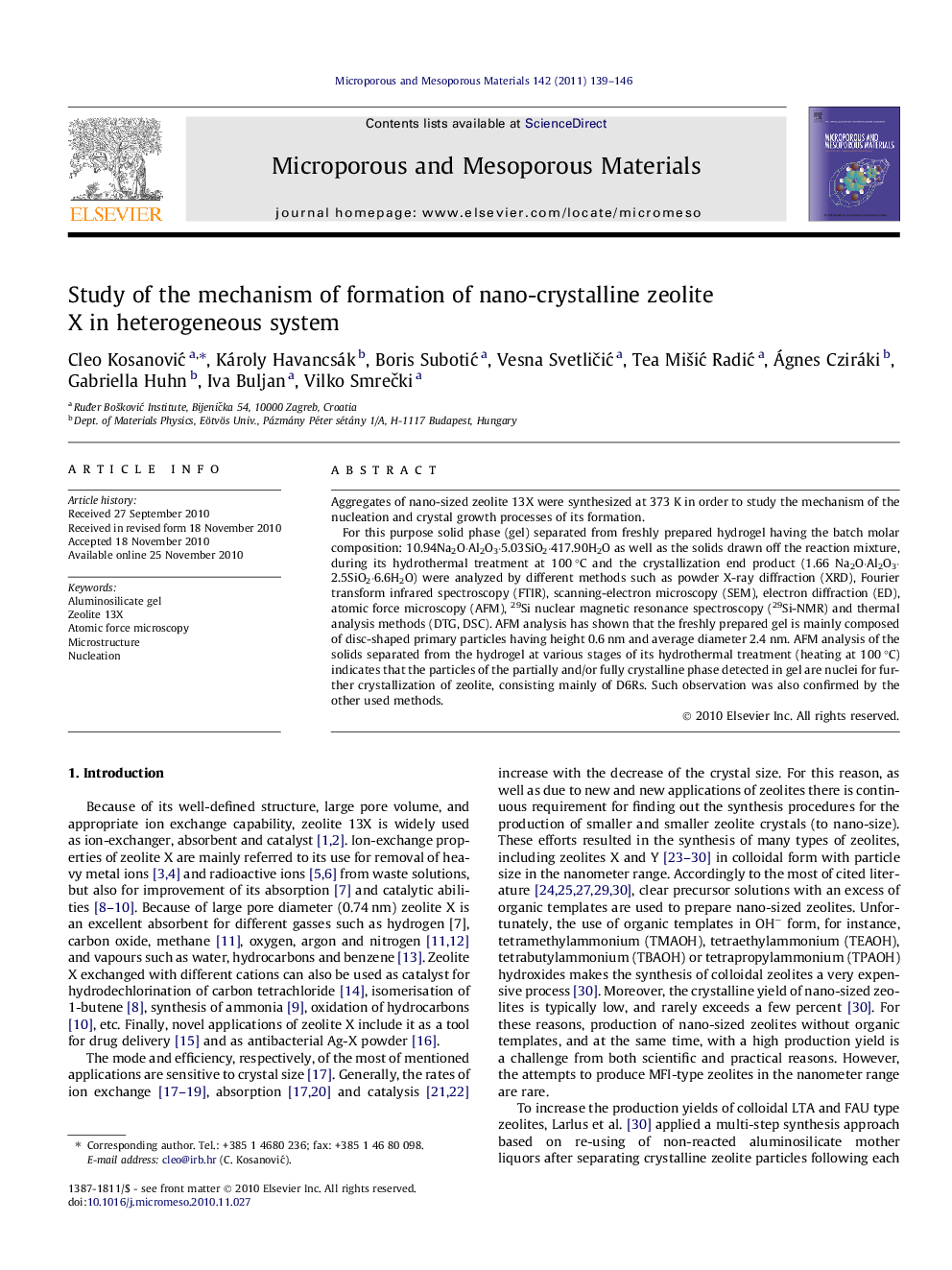| Article ID | Journal | Published Year | Pages | File Type |
|---|---|---|---|---|
| 74629 | Microporous and Mesoporous Materials | 2011 | 8 Pages |
Aggregates of nano-sized zeolite 13X were synthesized at 373 K in order to study the mechanism of the nucleation and crystal growth processes of its formation.For this purpose solid phase (gel) separated from freshly prepared hydrogel having the batch molar composition: 10.94Na2O·Al2O3·5.03SiO2·417.90H2O as well as the solids drawn off the reaction mixture, during its hydrothermal treatment at 100 °C and the crystallization end product (1.66 Na2O·Al2O3·2.5SiO2·6.6H2O) were analyzed by different methods such as powder X-ray diffraction (XRD), Fourier transform infrared spectroscopy (FTIR), scanning-electron microscopy (SEM), electron diffraction (ED), atomic force microscopy (AFM), 29Si nuclear magnetic resonance spectroscopy (29Si-NMR) and thermal analysis methods (DTG, DSC). AFM analysis has shown that the freshly prepared gel is mainly composed of disc-shaped primary particles having height 0.6 nm and average diameter 2.4 nm. AFM analysis of the solids separated from the hydrogel at various stages of its hydrothermal treatment (heating at 100 °C) indicates that the particles of the partially and/or fully crystalline phase detected in gel are nuclei for further crystallization of zeolite, consisting mainly of D6Rs. Such observation was also confirmed by the other used methods.
Graphical abstract.Figure optionsDownload full-size imageDownload as PowerPoint slideResearch highlights► Nano-sized zeolite X was prepared using hydrogel with high alkalinity (Na2O/Al2O3 = 10.94). ► Secondary building units D6Rs, as possible nuclei were determined in the gel phase. ► Zeolite X crystals having mean size about 200 nm as they are estimated by SEM analysis.
